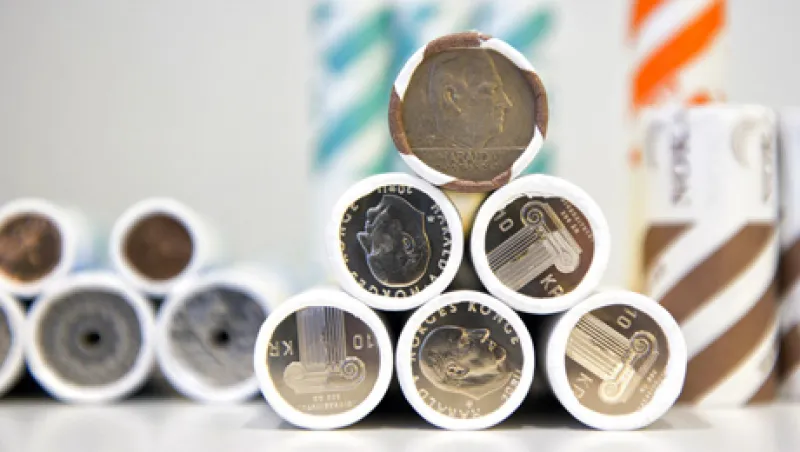For the first time in months, investors are worrying about prospects in the U.S. and euro zone at the same time. Where, in response to this double trouble, can currency investors go?
Fears about the global economy have tended, in the past, to send investors fleeing into the greenback.
However, this time it may be different because the U.S. has its own homegrown crisis: the fear that the fiscal cliff, an automatic and abrupt fall in government spending and rise in tax, will not be eliminated before it becomes reality in January.
“In any rational world, a U.S.-specific crisis would be bad news for the U.S. dollar,” says HSBC. It acknowledges that, at the moment at least, investors are not choosing to inhabit this rational world. Anxiety about the fiscal cliff has pushed up the dollar because its refuge status is, in the words of HSBC, “truly embedded in the psyche of the market.” However, HSBC warns that further safe-haven buying in reaction to the fiscal cliff is “misguided,” and therefore bound to run out of steam. As a result, “the reaction function to the fiscal cliff is most likely to be a rally in the U.S. dollar followed by an aggressive and swift fall” — making it an unpromising haven, since by their very nature, haven assets do not exhibit violent volatility that may catch out investors.
Buying the euro may be even riskier, because of renewed fears that troubled euro zone economies may be too weak to bear the heavy burden of debt. The European currency fell to a two-month low of $1.266 last week on fresh fears about Greece’s fiscal position.
The Swiss franc, a historical safe haven, is more or less closed for business following the Swiss National Bank’s 2011 decision to erect a currency ceiling. Sterling’s status as a more recent refuge has attracted doubters who feel it may be unworthy of the honor, following the Wednesday warning by Sir Mervyn King, governor of the Bank of England, that the economy “may be in for a period of persistently low growth.” His decision to talk the pound down — he described its 8 percent trade-weighted rise over the past year as “not a welcome development” — has also taken some of the brio out of sterling bulls, since currency investors are usually wary of testing their power against central bankers.
That leaves the yen, which had been looking more attractive as memories of the Bank of Japan’s August 2011 intervention to bring its value down began to fade — but suddenly much has changed. Its luster has been dulled by last week’s news of a sharp fall — 3.5 percent on an annualized basis — in third-quarter gross domestic product (GDP).
There are times when the yen has been profoundly indifferent to the vicissitudes of the Japanese economy, but now is not one of them. On Friday the Japanese government dissolved parliament, clearing the way for a general election on December 16, which is almost certain to lead to a regime change, from a coalition led by the Democratic Party of Japan to one dominated by the Liberal Democratic Party. Consequently, Japan’s probable new prime minister in December is Shinzo Abe, who on Monday espoused “unlimited” monetary easing by the Bank of Japan to lick deflation, which is caused by weak economic growth. Monday’s appalling number strengthens his hand. If the bank succumbs to this pressure by deciding on aggressive monetary expansion, the yen is set to hurtle downwards.
However, one attractive destination in the problematic search for a safe haven is Norway, whose net debt ratio, at minus 170 percent of GDP, is the most benign among the Organization for Economic Cooperation and Development’s 34 rich-country members. The Norwegian krone continues to climb higher against the euro and hold its own against the dollar. At €0.136, or 7.4 krone to the euro, it is close to a nine-year high against the single currency. “Heightened geopolitical tensions in the Middle East should prompt oil to command a higher risk premium, supporting the Norwegian economy through its large export exposure of crude,” says Morgan Stanley. “Furthermore, with political and economic uncertainty plaguing Europe, Norway should continue to be seen as a haven.”
Ten years ago the prospect of economic crisis in the U.S. would have led to extremely bearish forecasts for crude oil, making it difficult to justify bullishness towards the Norwegian krone until the crisis was resolved. However, crude oil consumption by the BRICS (Brazil, Russia, India, China and South Africa), at 22.4 percent of the global total according to the BP Statistical Review of World Energy, now outnumbers U.S. consumption at 20.5 percent — and the 1.9 percentage-point gap is likely to grow larger quickly. The oil price — and hence oil currencies — may be able to weather U.S. weakness. The old order changeth.






